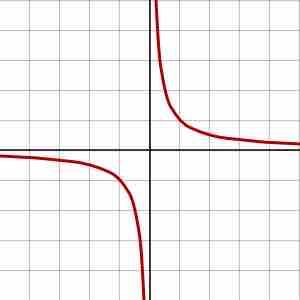A hyperbola can be defined in a number of ways. A hyperbola is:
- The intersection of a right circular double cone with a plane perpendicular to the base of the cone
- The set of all points such that the difference between the distances to two focal points is constant
- The set of all points such that the ratio of the distance to a single focal point divided by the distance to a line (the directrix) is greater than one
Let's see how that second definition gives us what is called the standard form of a hyperbola equation.
Diagram of a hyperbola
The hyperbola, shown in blue, has a center at the origin, two focal points at
We begin with two focal points,
Imagine that we take a point on the red hyperbola curve, called
where
From here there is some straightforward, but messy, algebra. We need to square both sides of this equation multiple times if we want the variables to escape their square roots. When the dust settles, we have:
At this point we introduce one more parameter, defined as
Lastly we divide both sides of the equation by
Thus, the standard form of the equation for a hyperbola with focal points on the
If the focal points are on the
Note that the hyperbola standard form is very similar to the standard form of the ellipse:
The similarity is not coincidental. The ellipse can be defined as all points that have a constant sum of distances to two focal points, and the hyperbola is defined as all points that have constant difference of distances to two focal points.
There is another common form of hyperbola equation that, at first glance, looks very different:

Reciprocal hyperbola
This hyperbola is defined by the equation
From the graph, it can be seen that the hyperbola formed by the equation